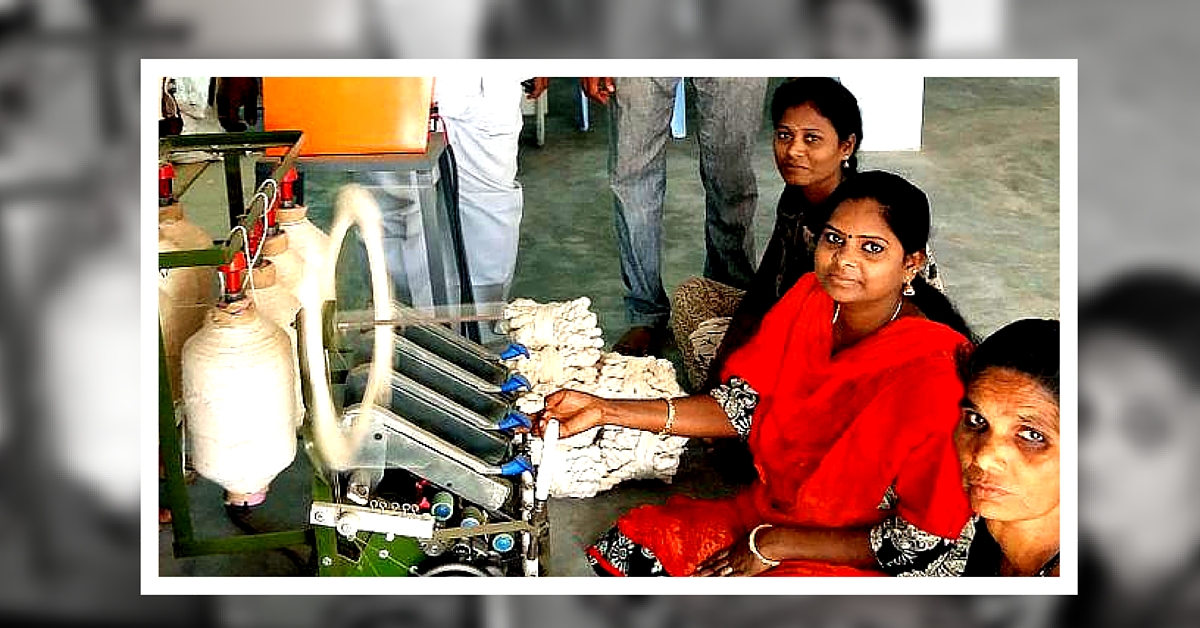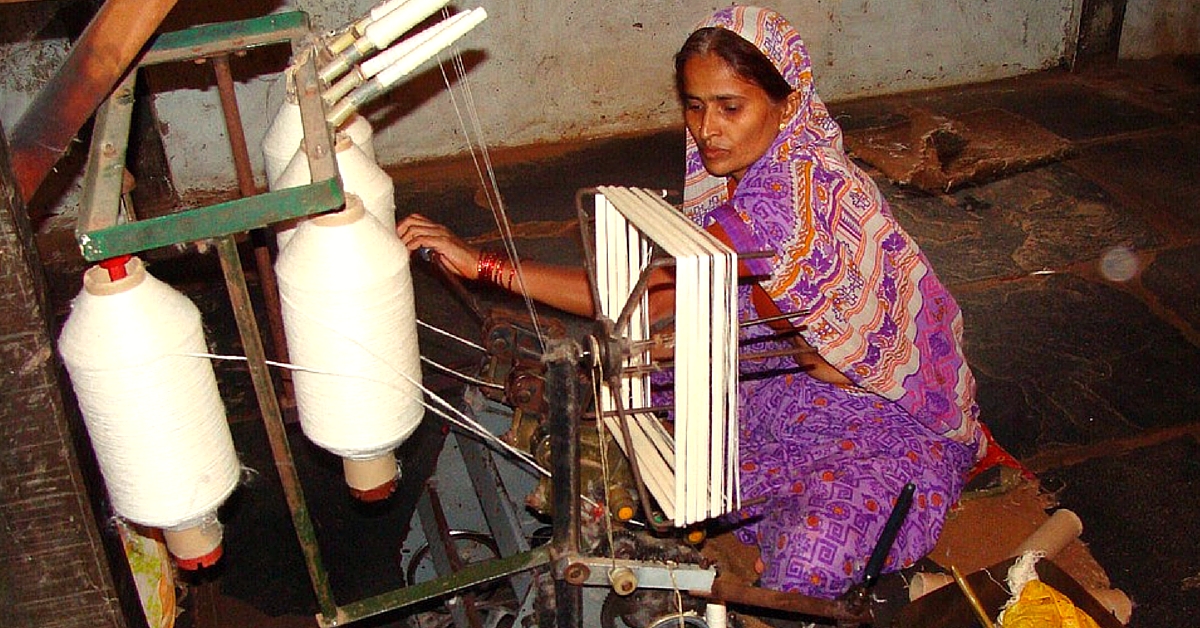10 New Solar Power Charkhas Set up in Khadi Mills to Boost Output and Income of Artisans
With the introduction of solar powered spinning wheels, the Khadi output is estimated to increase by 300%, while adding 8 million more jobs in India. Besides this, an artisan could earn more than before, without manual labour.

India’s oldest industries are switching to renewable sources of energy, and for good reason. After the Railways, the latest to join the bandwagon is the Khadi industry. Replacing hand-driven charkha, or spinning wheels, the Khadi and Village Industries Commission (KVIC) aims to make the lives of its workers much simpler.
Manually, a spinning wheel can make about 30 hanks in a standard day of eight hours.

But with the newly acquired solar powered charkha, about 75 to 90 hanks can be produced in the same time frame. In turn, an artisan’s daily earnings go up from Rs 140 to Rs 350, which is a major morale boost for them.
There’s an expected rise of 300% output now that 10 solar charkha have been sourced from Udyog Bharti in Gujarat. Acquired under the Prime Minister’s Employment Generation Program, one solar charkha costs about Rs 72,000.
Currently, these wheels are installed at Khadi factories in Anakapalle, Tuni, Narasannapeta, Vemulapudi, Krishnapuram, and Visakhapatnam.
According to the KVIC, there’s a higher chance that employment will increase in the industry, especially in the rural pockets of the country. The previous limitation of hard labour replaced with mechanically operated charkha and an increased output could motivate homemakers living in these rural areas to join the workforce. According to estimates, 7 to 8 million jobs could be added.
The KVIC had announced plans of developing solar powered spinning wheels almost a year ago. After trials of the solar charkha in the Khanwa village in Bihar, the government’s proactive push for these machines made it a possibility now.
Encouraged by positive responses from the artisans, K Brahmajee Rao, divisional director of KVIC, plans to acquire more spinning wheels. In a quote to The Hindu, he said, “The plan is to get 10 solar charkha for major Khadi institutions and five for medium ones that fall in the bracket of the divisional office of KVIC in Vishakhapatnam.”
Solar powered charkha also saves electricity. Khadi, a ‘green’ fabric, consumes lesser water as opposed to other fabrics during production. The move to switch to solar charkha makes the Khadi industry a shining example of a sustainable, employment generating, eco-friendly industry.
Feature image source: The Hindu
Like this story? Or have something to share? Write to us: [email protected], or connect with us on Facebook and Twitter (@thebetterindia).
If you found our stories insightful, informative, or even just enjoyable, we invite you to consider making a voluntary payment to support the work we do at The Better India. Your contribution helps us continue producing quality content that educates, inspires, and drives positive change.
Choose one of the payment options below for your contribution-
By paying for the stories you value, you directly contribute to sustaining our efforts focused on making a difference in the world. Together, let’s ensure that impactful stories continue to be told and shared, enriching lives and communities alike.
Thank you for your support. Here are some frequently asked questions you might find helpful to know why you are contributing?


This story made me
-
97
-
121
-
89
-
167













